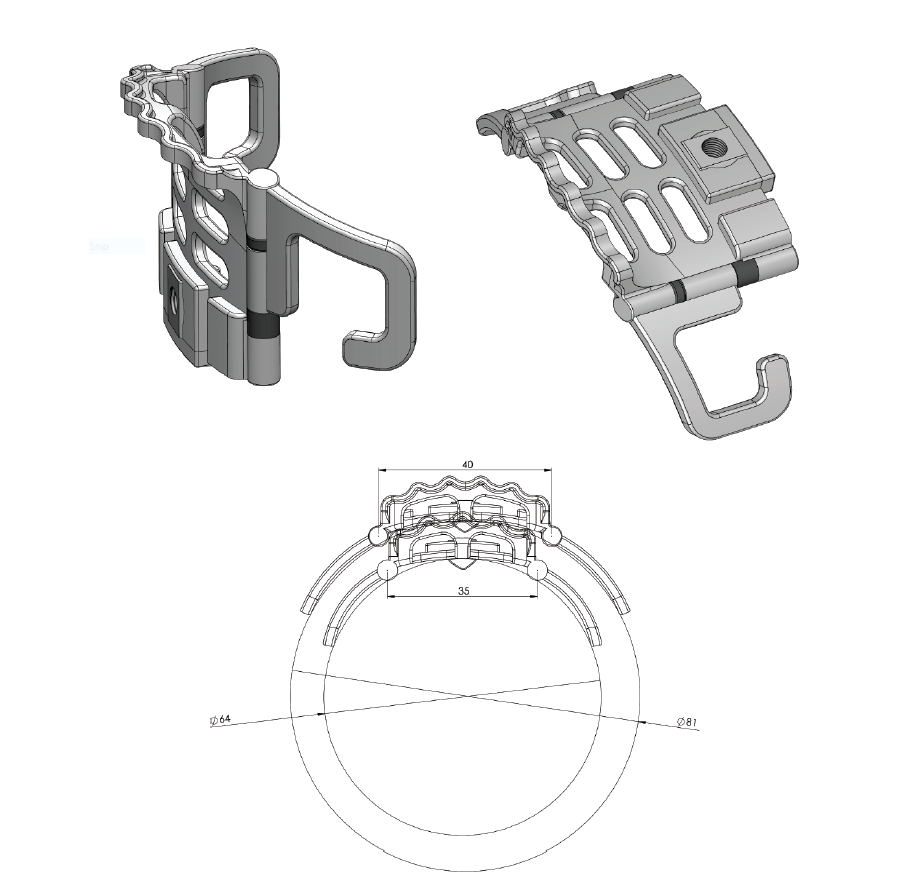ALERT!
This site is not optimized for Internet Explorer 8 (or older).
Please upgrade to a newer version of Internet Explorer or use an alternate browser such as Chrome or Firefox.
CSV Retractor: The First Dedicated Minimally Invasive Retractor for The Right Atrium
Castillo-Sang M, Voeller RK. CSV Retractor: The First Dedicated Minimally Invasive Retractor for The Right Atrium. January 2024. doi:10.25373/ctsnet.24975582
This video is part of CTSNet’s 2023 Innovation Video Competition. Watch all entries into the competition, including the winning videos.
Minimally invasive cardiac surgery has evolved and advanced over the last two decades. However, ever since the first right minithoracotomy approach for mitral repair performed by Alain Carpentier in 1996, the equipment used for these operations has not changed much (1). The safety and efficacy of mitral and tricuspid valve operations performed with a minimally invasive technique is now well established (2, 3). In select high-volume centers tricuspid valvular disease is treated almost exclusively with minimally invasive technique.
The authors’ experience performing minimally invasive valve surgery dates to 2010 and since then, there have been very few advances in instrumentation and equipment needed to perform these operations. Today there are many options for left atrial exposure via right minithoracotomy—some better than others—but there have not been any dedicated options for tricuspid valve surgery or right atrial structure surgery. Traditional minimally invasive exposure of the tricuspid valve is based on suture retraction of the right atrium (4, 5). In some instances, mitral retractors have been used in the right atrial position (6).
The authors of this video set out to create a dedicated minimally invasive right atrial retractor with the tricuspid valve in mind (7, 8). The goal of this device was to create fast, reproducible, and stable right atrial exposure. For this purpose, the creators collaborated with a known minimally invasive atrial retractor manufacturer. To achieve the design, they used methods they had learned to expose the tricuspid valve via sternotomy and minimally invasive approaches. The first concept was that the curled edge of Cossgrove retractors used in open surgery offer the necessary traction for the right atrial tissue no to slip off. The second concept was that minimally invasive retraction would take place with anterior (upward) retraction of the tissues and would need connection to a standard traction holding device. The third concept was that the device needed to be small enough to fit through minimally invasive incisions that can range from 1.5 to 3 inches in length. The fourth concept was that the retractor needed to expose not only the central portion of the valve, but its entirety, as well as the walls of the right atrium. The fifth concept was that the retractor should facilitate control of indwelling right atrial structures such as pacing leads and pulmonary artery catheters for tricuspid repairs. The sixth concept was that the retractor would need to come in different sizes to cover the different sizes of the right atria.
Initial discussions took place in mid-2019 with preliminary drawings and concepts. In 2020, the authors approached the manufacturer with the drawings shown in the video. Discussions on the material, shape, features, and sizes were held until the team arrived at the conclusion that two sizes would likely be needed. The main body of the retractor would be fenestrated to allow visualization of the right atrial wall. The posterior edge of the retractor would have a curled edge with soft peaks and valleys that would help grip the right atrium, similar to the Cossgrove concept. The main body would have articulating wings on each side, each of which would have an ‘L’ shape to help control indwelling leads. The main body would articulate to the existing retractor holder for the HV atrial retractor. The final drawings and dimensions were created, and prototypes were created for evaluation ex-vivo. The final production design was created in 2022 and the device was named the CSV right atrial retractor (Figure 1).
Fig. 1: CSV right atrial retractor final production design.
The CSV retractor has been used safely and successfully for minimally invasive endoscopic and direct vision tricuspid valve surgery and other right atrial operations as well as select left atrial operations, as shown in the video.
The authors have found that deploying the device through a small incision is easy. When performing concomitant tricuspid valve surgery, the average transition time from left atriotomy closure to RA exposure was 5.6 minutes, with a range of 2-13 minutes. The retractor allowed full visualization of the TV, interatrial septum, coronary sinus, and ostia of the vena cava.
The creators of the device have been very pleased with the exposure the retractor affords in right atrial operations, but have also found it to be very safe and effective in left atrial surgery in cases where the patient has had a prior aortic valve replacement (surgical or TAVR), as conventional left atrial retractors go too deep in the left atrium and while lifting upwards can injure the left atrium and aortic root against the aortic prosthesis. Another scenario in which the device is highly useful is in fibrillatory arrest or beating heart cases of mitral valve surgery as it minimizes distortion of the aortic valve during left atrial exposure, therefore decreasing the aortic insufficiency created by the exposure. In a small left atria in which the mitral annular plane is close to the atriotomy in the interatrial groove, the retractor is excellent in allowing access to the mitral annulus for suture placement given its shallow depth.
In conclusion, the team has been very pleased with the versatility and stability of the CSV retractor in minimally invasive tricuspid, right atrial, and select left atrial operations.





